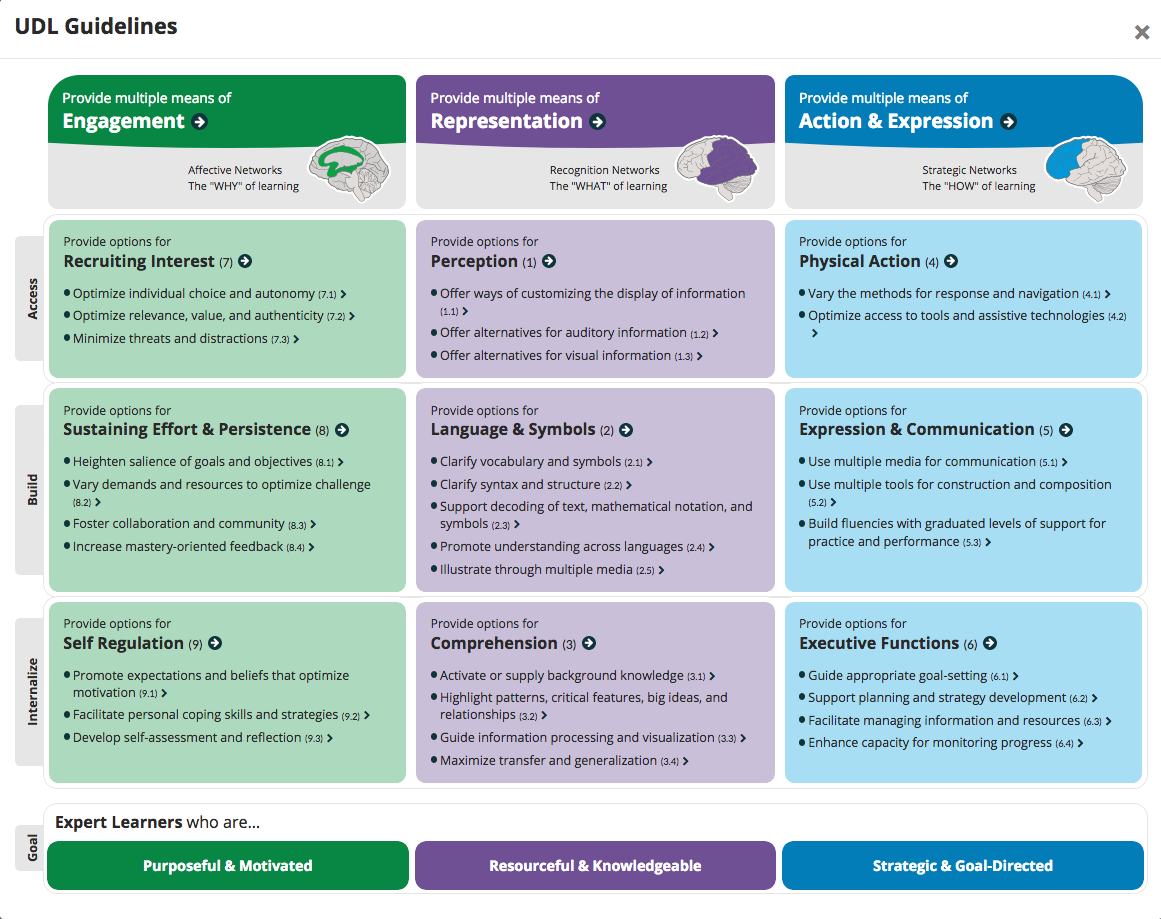Universal Design for Learning
Universal design principles for online learning environments are based on the knowledge that a broad range of human abilities exist. Therefore the creation of content needs to be made as usable as possible for as many people as possible regardless of age, ability, or situation.
Usable content accommodates people with disabilities, older people, children, novice technology users, and others in ways that benefit all users. Online courses and communities add the dimension of anytime, anywhere access. This creates many different scenarios for students and instructors engaged in the process of teaching and learning not defined just by ability, but by time and place as well.
Designing for a wide range of users from the beginning of the building process can increase usability without significantly increasing the time it takes to build. The results benefit everyone and reduce modifications later when students, instructors, or content changes.
UDL Guidelines
Universal design for learning seeks to provide:
Accessibility
In today's educational settings, the mix of students is more diverse than ever. Educators are challenged to teach all types of learners, and they are evaluated against changing standards. Teachers want their students to succeed, but a one-size-fits-all approach to education simply does not work. There are some simple things you can do to make your course more accessible for the learner. Making your course accessible will help the learner access the content with little to no issues. For more information on how to make you content accessible visit the Accessible Technologies page.
Additional Resources
UDL Campus CAST Website
National Center on Accessible Educational Materials Website
